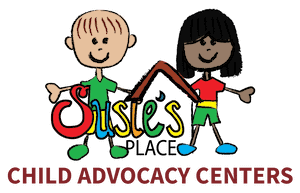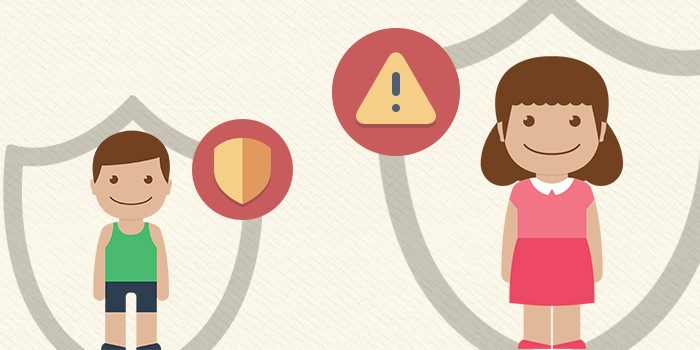Body safety can be an awkward topic for parents and children alike. However, those conversations are necessary to arm children with the knowledge to attempt to avoid dangerous situations, but also the vocabulary and comfort level to be able to report inappropriate physical contact to a safe adult. Here are some age-appropriate ways to talk to your child, no matter the age.
START YOUNG – As your child begins to talk and learn body parts, use accurate body part names, like toes, hands, eyes, etc. Children should also know the correct names for their genitals. Using real words like penis and vagina are key to taking away the stigma of talking about these body parts. Preschool age children will show no fear of reporting that a classmate kicked their shin, and they should feel equally able to discuss a touch on their vagina.
TEACH BOUNDARIES – Your child now knows the proper names of their body parts. They should then understand their rights to their body. Children should not be forced to accept touches from anyone on any body part. A child with ownership of their body will be less likely to consent to touches that make them uncomfortable. Specifically, the areas covered by a swimsuit are the parts that only parents and a physician should see. Likewise, they should not be touching anyone else on their private parts. Often, that part of the conversation is left out and perpetrators will ask children to touch their bodies.
AVOID “GOOD TOUCH BAD TOUCH” – Often people revert to this language when describing to children what type of physical touches are appropriate. However, though it is uncomfortable to admit, sometimes the inappropriate touches can feel good. Instead, discuss touches as safe and unsafe. Examples of unsafe touches to put it in perspective for them is hitting, kicking or feeling that can make you feel scared or get a funny feeling in their tummy. Safe touches will make you feel happy and loved.
“STRANGER DANGER” IS NOT ENOUGH – It is very easy to teach children to avoid strangers, which creates a bubble of safety around the child’s everyday life. However, the majority of abuse is done by people the victim knows. So, while you should still cover the topic, you also need to explain that even people they know need to follow the body safety rules. Parents may need to touch a private part to clean or apply medication, but uncles, aunts, teachers, coaches, etc. do not.
SECRETS DON’T MAKE FRIENDS – The best way to protect your child is to be the person that they can trust. Your child should know that secrets shouldn’t be kept from parents. Assure your child that nothing they say about touching private parts or feeling scared of people will ever make you angry, upset or get your child in trouble in any way. Most importantly, make sure they know that any time they come to talk to you about any issues like this, you will believe them. Believing a child is the key to ensuring that they will be open and honest about what they experience.
Unfortunately, there is no step by step manual that will guarantee protection from child abuse. There is no clear cut cartoon villain to avoid to ensure a long, happy, safe life. What there can be is an education and honest dialogue with children about their bodies and body safety. Have the conversations early and often, and most of all, foster a relationship where your child can always ask you for help.



